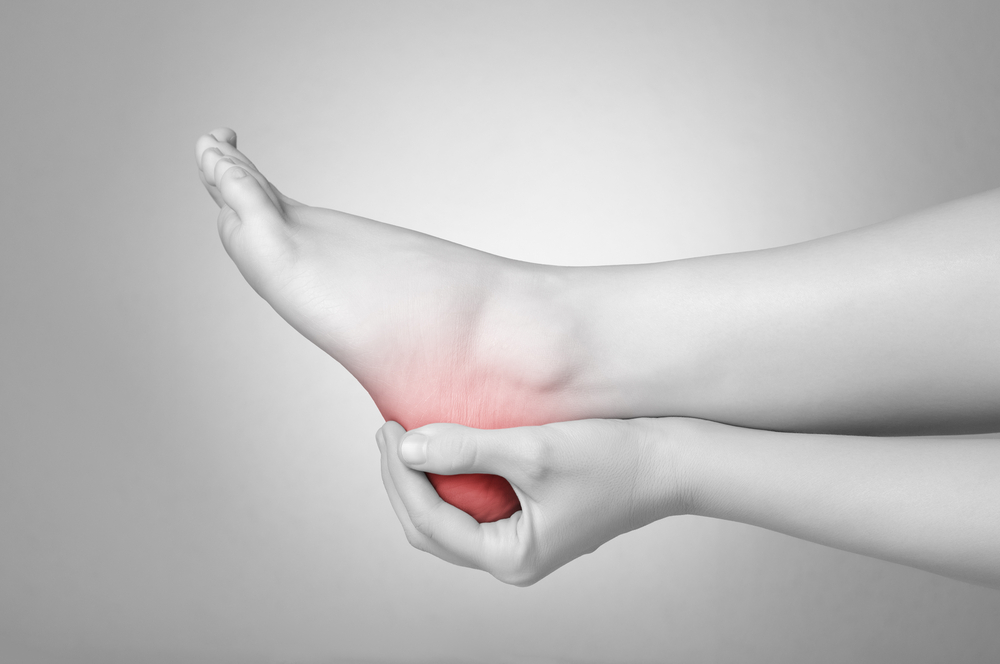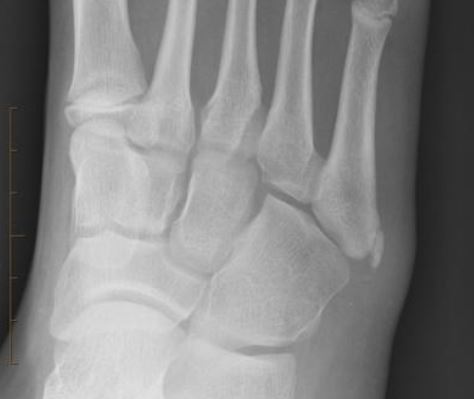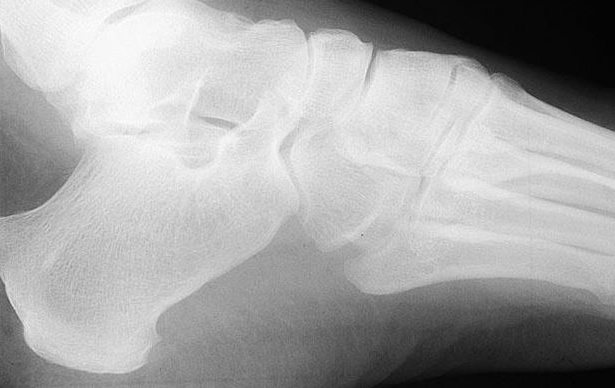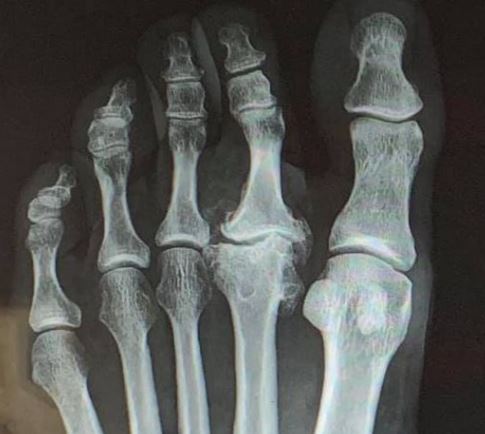Sever’s disease is a really common problem of the growing area of the heel bone (calcaneus) in children. Firstly, it is not a disease, but the name of ‘Sever’s disease’ is by far the most common term used for this. The name does conjure up all sorts of horrors with the use of the word, “disease”. The more appropriate name, but less commonly used should be ‘calcaneal apophysitis’.*
At the back of the heel bone, there is a plate of bone or fragments of bone that is separated from the rest of the heel bone by a cartilage area which growth of the heel bone occurs at. This growth area of cartilage becomes bone to form one complete heel bone usually by the early-teenage years. There is quite a bit of individual variability as to when this happens, but Serer’s disease is generally quoted as most commonly occurring between 8 and 12 years of age. It is not possible for Sever’s disease to occur after this as there is no growth plate for the injury to happen at. Adults do not get Sever’s disease – it is just not possible (they can get heel pain for a lot of other reasons).
The Achilles tendon is attached to this growth area and when running or walking, this is the first part of the foot to contact the ground when heel striking. This means that the growth area is subjected to a lot of stress during activity. If that activity is high, or the child is overweight or the sports surfaces are hard, then there is a chance that an overuse injury may occur to that growth plate resulting in the Sever’s disease.
Causes of Sever’s Disease:
Sever’s disease is an overuse injury of that growth plate at the back of the heel bone. The growth plate is placed under a lot of stress during activity (from the pull of the Achilles tendon and the heel striking the ground first), so if the levels and types of activity are high, then that increases the chances of this overuse injury happening. There are a number of things that are thought to increase the risk for this happening such as the type and amount of activity; rapid increases in activity levels; tight calf muscles; being overweight; and hard sports surfaces.
Symptoms of Sever’s Disease:
If a child between the ages of 8 and 12 has pain in the heel, then its probably Sever’s disease. Not always, but most commonly this is the reason. Typically there is increasing pain at the back of the heel bone that gets worse with increased activity and weightbearing. The calcaneal squeeze test is when you squeeze the sides of the heel bone near the back. If that is painful, then that is indicative of Sever’s disease (or a calcaneal stress fracture).
There is no x-ray or other imaging that can help diagnose Sever’s disease as the growth plate normally appears quite irregular on x-ray.
The pain can sometimes get so bad that the child may be limping and even crying after sports activity. This can bring about quite a bit of stress and angst in the child and parent and the coach.
Treatment of Sever’s Disease:
Throwing the kitchen sink at Sever’s disease is going to involve:
- Understanding. One of the more important aspect of the treatment is understanding exactly what the condition is and how it comes about and how it is self-limiting. They will grow out of it by the early teenage years. Just because they will grow out of it does not mean that it should be left alone and not treated due to the pain and stress that it will occur if not managed until that natural history is to grow out of it. In time, they will come right.
- Pain management. This probably does not need any medicines for pain relief, but the use of ice after activity to manage the pain is important.
- Load management. This is crucial. Sports and physical activity levels have to be reduced down to a level where the pain is tolerable. This should include school and club sports activities. If they train and compete regularly, maybe just compete and not train for a while to let it settle. Use common sense here, we do not want the child to give up sport, but we need to keep activity levels at some level, but it has to be tolerable. As things start to improve, then the level of activity can be increased. This has to be done slowly and gradually.
- Protection. As the heel bone is subject to a lot of load from the Achilles tendon and the hard ground, it makes sense to protect it with a cushioned heel pad. They need to be the right density. Too soft and they will flatten out and do nothing. Too hard and they won’t add any shock absorption. A good running shoe or football boot or whatever footwear they wear during sport can help. However, in some sports (eg gymnastics) that may not be possible. The footwear should have some cushioning and a slight heel raise to help the stress and loads on the heel area. On a few occasions a foot orthotic may be needed to better support and protect the foot and spread out the loads under the foot and to change the alignment of the foot. In the worst cases, a walking brace or ‘moon boot’ may have to be resorted to in order to fully protect the foot from weightbearing and help restrict activity levels (load management).
Always keep in mind that the symptoms of Sever’s disease fluctuate. Some weeks it is bad and some weeks it is good, even if you do not do anything to treat it. That is the normal natural history of the condition. This also can, unfortunately, give rise to some poor treatment options and myths. If something is done or given to the child for the Sever’s disease just as they are about to have a good week, the treatment is going to be hailed as a success when the treatment may have done absolutely nothing. Similarly, a really good treatment may be provided just as the child is about to have a bad week, so the treatment makes no difference when without the treatment, the child might have been going to get worse. This can be the source of a lot of testimonials and anecdotes from parents as what they think does and does not help Sever’s disease. For example, you can see a lot of testimonials and anecdotes for Oscon supplements for Sever’s. There is nothing in the Oscon that would have any physiological affect on the condition, yet so many swear by its effectiveness. Others are just as adamant that it did not help. It will all depend on when the Oscon is tried during the cycle of the symptoms as to if they think it helped or did not help.
Science is the solution to this kind of dilemma. If you take 100 children with Severs and did nothing, a week later X% would have improved. What is needed is proper clinical trials in which, say for argument sake, 100 children are given a treatment and 100 given a placebo. Keep in mind that X% in both groups will get better anyway. If a treatment is effective, then more than that X% will get better in the group that got the treatment. The recommendations above are based on just that kind of research. Despite being available for many years, those that market Oscon have not done any sort of clinical trial to show that it can result in more than the X% that would be expected to get better anyway.
You can read more on the research in some of the forum links below.
Forum Questions and Discussions on Sever’s Disease:
Does Oscon work for Severs disease?
Leave or treat Severs Disease ?
Footwear and foot orthoses for calcaneal apophysitis
Severs disease treatment
Severs disease: orthotics vs physical therapy vs ‘wait and see’
Return to sport after calcaneal apophysitis (Sever’s disease)
Severs disease and quality of life
Severs disease?
Severe case of Sever’s
Sever’s Disease – Surgery
Sever’s Disease in young child
9 year old with sever’s disease
Videos on Sever’s Disease:
PodChatLive, Episode 28 with Alicia James on Calcaneal Apophysitis
Personal Opinion on Sever’s Disease:
I used to think I knew a lot about Sever’s disease. I taught the students about it for years and I was up to speed with all the research on it. I have been treating it for years. However, when my own daughter got it I suddenly realized that I did not know as much as I thought. Nothing I seemed to do was helping her. I was getting a bit embarrassed. I finally worked out why. As a clinician and as a parent I had no control over what she did at school. The load management approach did not take into account all this activity at school. All she wanted to do was run around with her friends during the lunch break. That running around was why she was not getting better, despite everything I did and told her to do. I learnt a lot about the importance of managing loads when a child has Sever’s disease from that episode. I wrote about that here. As a lot of her friends around that time also had Sever’s disease, I used that to chat to them about what they did to help it and their experiences. I wrote about that here.
*Also, I apologize to my colleagues for calling it Sever’s Disease rather than Calcaneal apophysitis. The simple reason for doing that is that ‘Sever’s Disease’ is searched much more commonly in the search engines like Google than is ‘Calcaneal apophysitis’. When you are writing on the web, you do want your content to show up in the search engines!
Author:
University lecturer, runner, cynic, researcher, skeptic, forum admin, woo basher, clinician, rabble-rouser, blogger, dad.



